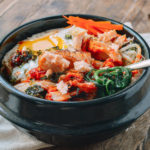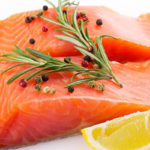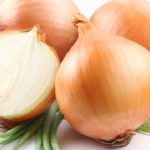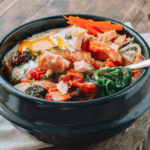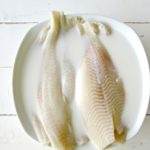1 Choosing Fresh Salmon

When selecting salmon, look for fish with bright, clear, and black eyes. The belly scales should be shiny and iridescent when viewed from the side. The flesh should be firm, and when you press your thumb on the eye, it should bounce back to its original shape. The gills should be red, and the more slime in the gills, the fresher the fish. Run your hand from the head to the tail, and the flesh should spring back.
Avoid salmon with dull eyes and flesh, and ensure the flesh is firm and bounces back. Additionally, you can hold the tail and give it a gentle shake. If the fish is fresh, the bones will not separate from the flesh.
2 Removing the Fishy Odor
Salmon has a strong fishy smell, and proper odor removal is essential to enhance the appeal of your dish.
Method 1: Dilute salt in water and add two tablespoons of lemon juice. Wash the salmon pieces in this solution and then rinse them in cold water before cooking.
Method 2: Soak the salmon in milk for 3-5 minutes. The milk will neutralize the fishy odor. Finally, rinse the fish thoroughly with clean water.

Method 3: Mix grated ginger with rice wine and marinate the salmon in this mixture, ensuring both sides are coated. This method not only removes the fishy smell but also enhances the flavor of the fish.
3 Deboning the Salmon

Place the cleaned salmon on a flat surface or cutting board. Run your finger along the flesh, and if you feel any bones, use tweezers to carefully remove them in the direction of the bone to avoid tearing the flesh. Continue until you can no longer feel any bones.
Porridge with Salmon and Mallow is a nutritious dish for babies who have just started eating porridge. It is packed with nutrients and is gentle on their digestive system.
Salmon Floss is a popular and nutritious dish, especially loved by children. However, store-bought floss often contains preservatives and may not be made from pure salmon, which is a concern for many parents.

Instead of eating out, you can prepare a delicious and healthy breakfast at home using salmon, a great source of protein and omega-3. Try salmon porridge to start your day right!
Salmon is a favorite among families for its flavor and nutritional benefits. It is an excellent source of protein, vitamins A, C, and B, and essential minerals. To truly appreciate the sweetness and juiciness of salmon, try grilled salmon.
There are various recipes to choose from to add variety to your meals.
By following these tips, you can prepare salmon the right way, retaining its delicious flavor and nutritional value.
“3 Simple Steps to Remove the Fishy Smell of Salmon”
Are you looking for ways to get rid of that unpleasant fishy smell associated with salmon dishes? If so, we have some useful tips that can help you make a delicious and healthy meal without the fishy odor. Keep reading to learn our easy-to-follow suggestions for removing the odorous smell from salmon dishes!
Exploring Natural Foods for Allergy Relief
Dealing with allergies can be difficult and uncomfortable, especially for young children. Allergens such as pollen, cosmetics, and insects can cause serious issues for those affected. However, knowledge of the symptoms and taking the necessary precautions can help alleviate the troublesome effects of allergies, like itching, sneezing, and irritation.

























